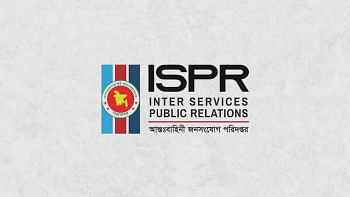Crafting a perfect resume: The Basics

One day while going through your Facebook or LinkedIn feed, you come across a hiring post. It's in the company you have been obsessing over for the last few months. You spend a whole day thinking about what to put in your resume. You finally finish it and send it out. One week passes, one month passes. But you don't get a response back. Feel disappointed?
Now let's switch roles. You want to hire someone for a specific role. You put up a post on LinkedIn. By the end of the week, you get 50 responses. Your job now is to go through all of these resumes and call only 5 for an interview. You have only 24 hours to do so. Now, what do you look for in resumes? What do you do when multiple people have similar qualifications or previous experience? Are you sure you went through all the resumes properly?
In a country like ours where one out of every three graduates are unemployed, it is very common for a huge pool of people to apply for one job. In a situation like this, the question shifts from are you qualified enough to do the job to have you caught the attention of the person who is going to go through your resume.
What to include
The first thing to add to your resume is your name and contact details. Phone number and email address are mandatory for contact details. Although the address was also included in the earlier days, it is optional now. Links to social media accounts, especially LinkedIn, add value to your resume. After the name and contact details, a personal profile or professional summary can be added. For those who have had no prior work experience, it is better to ditch this section.
After this comes the most important section: education qualification, work experience, and extracurricular activities. If you have not graduated or chosen your major yet, add the expected year of graduation and your intended major. Don't just mention the places you have worked in, mention some of the key activities or achievements from there. Extra-curricular activities are supposed to be extra. Only include the ones that are relevant and don't worry if you don't have any. Finally, you can add skills and an interests section. The objective of this section is to show how well you fit with the job and the organization. Make it concise, make it relatable!
What not to include
There are only two things you do not have to include in your resume: your personal information and references. Although personal information like age, date of birth, religion, marital status was added in the earlier days. But such information does not affect one's ability to do a job and is not required. Adding references to your resume is not standardised anymore. One line you can add is 'references available upon request'.
Formatting guide
Recruiters have to go through a lot of resumes while hiring. Thus, they do not have the time to find out what part of your resume is important or relevant to them. It is your job to highlight the right qualities or abilities. Firstly, always add headers for each section to be distinguishable. Secondly, be as concise as possible. Keep enough free spaces and don't make your resume too long. An ideal resume should be one-page long. Even if it is a CV, it should not be more than two pages. Thirdly, make your fonts readable. The font size for headers should be 14 to 18 and for the body should be 10 to 12. Use standard fonts like Arial/Calibri/Times New Roman or any font that is clearly readable. Finally, be consistent with your formatting. Use the same font, same line spacing, the same format of headers, same borders, and same one/two colours.
Remember that adding photos in a resume is not the standard practice anymore. Recruiters don't want to succumb to any conscious or unconscious bias and moreover, adding a photo distracts them from focusing on your skills and background. A picture is not ATS (applicant tracking system) friendly either.
All about keywords and relevance
The reason for not getting called most of the time is not having the right skills but not being able to highlight them properly. The functionality of your resume precedes any other factor. Search for keywords by looking at the job description and other similar job listings. Find the most important ones and integrate them into your resume. Add quantitative descriptions as much as possible. Tell your story and be relevant.
You don't have to mention all of your work experience and extracurricular activities. Mention only the ones that are relevant. Address how you have contributed and impacted in your previous jobs. Be as objective as possible and most importantly do not lie on your resume.
Final thoughts
One of the most important factors before sending out a resume is customizing it to the needs of the job. Always filter out information that are not important and highlight the ones which are. Structure your experience and activities to fit the role. The functionality of your resume matters more than anything.

 For all latest news, follow The Daily Star's Google News channel.
For all latest news, follow The Daily Star's Google News channel. 



Comments